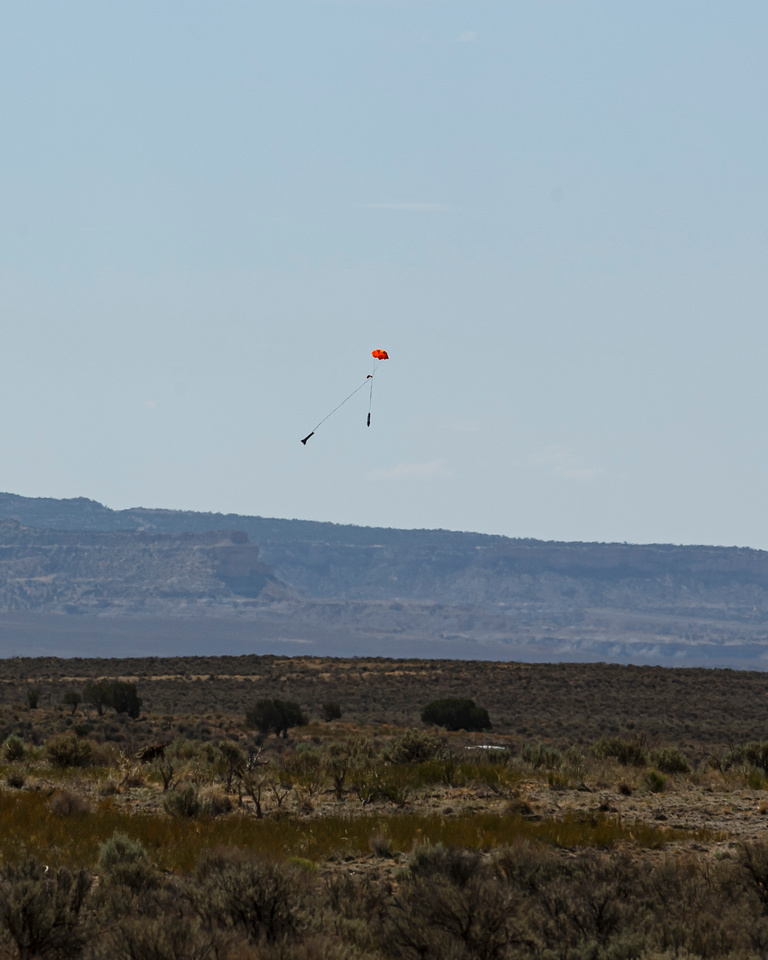Is there a post for rookie HPR mistakes? If there is could the mod move this? If not... I'll go first 

When you don't secure the parachute protector to keep it from sliding up the shock cord...

it slides up the shock cord. Luckily I sewed a loop in the shock cord for the parachute so it stopped there rather than continue up the shroud lines. I have a sequence of photos that shows the protector moving along the cord. The angle on this shot doesn't show it very well but the nosecone was swung out as far as the booster. It came down like a sick helicopter. No rocket damage though. Luck counts...

When you don't secure the parachute protector to keep it from sliding up the shock cord...

it slides up the shock cord. Luckily I sewed a loop in the shock cord for the parachute so it stopped there rather than continue up the shroud lines. I have a sequence of photos that shows the protector moving along the cord. The angle on this shot doesn't show it very well but the nosecone was swung out as far as the booster. It came down like a sick helicopter. No rocket damage though. Luck counts...












